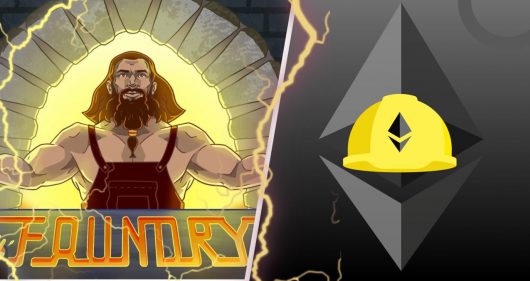A closer look at NFT use cases: Why NFTs are more than just JPEGs?

The rise of Web3 has seen the emergence of Non-Fungible Tokens (NFTs) as a crucial factor in the growing popularity of cryptocurrency and the shaping of a decentralized future in fields such as ownership, finance, and more.
Despite claims that NFTs are mere “JPEGs,” the reality is that their potential extends beyond art or collectibles, tapping into our innate desire for social status and community connection. NFTs are the foundation of a new approach to interaction both in the virtual and physical realm.
That is why in this article, you’ll be taking a closer look at some alternative NFT use cases than mere collectible art but first…
What is an NFT?
According to the Merriam-Webster dictionary, an NFT is “a unique digital identifier that cannot be copied, substituted, or subdivided, that is recorded in a blockchain, and that is used to certify authenticity and ownership (as of a specific digital asset and specific rights relating to it)” or “the asset that is represented by an NFT.”
As you can see already, the definition is quite broad, leaving plenty of space for some “hmm…” moments in pinpointing exactly what can be deemed an NFT. Is it an artwork? A music piece perhaps? Or an ownership identifier? Let’s bust some of the most common misconceptions about NFTs.
Busting NFT myths and misconceptions
Are NFTs just pictures? Are NFTs JPEGS? Are NFTs just digital art?
Yes and no. NFTs can hold any media, whether it is a static image (e.g. JP(E)G, PNG, or SVG), a dynamic visual (e.g. GIF, MP4, or MOV), or an audio file (e.g. MP3, WAV, FLAC).
Are NFTs just links? Are NFTs just URLs?
Not exactly. It is true that NFTs carry a link or URL to the media asset they hold (e.g. hosted on IPFS, Arweave, Filecoin, or a Web2 storage solution) but they can also store plenty more information than just that.
Are NFTs just a fad? Are NFTs just money laundering?
Absolutely not! As blockchain technology was once deemed a fad and a money laundering exercise, so has this stigma spread over to NFTs. Digital assets and collectibles in the form of NFTs are here to stay and we have seen many industry leaders to their own take on the vertical, as is the case with Coca Cola, Nike, or Louis Vuitton, among the now many.
What are NFTs and how do they work really?
But let’s take a moment to abstract away from the typical NFT definition and look at them from a more technical perspective. When you look at NFTs, as a code implementation, it is clear to see that they are essentially nothing more than just a metadata container. In layman’s terms, this means they are just a way to hold information, regardless of its type.

And by knowing this, the power to create exceptional Web3 experiences with advanced NFT use cases is now successfully in your hands. All it takes is an appropriate smart contract and a mint transaction to get started. So, let’s get creative—here’s a list of potential NFT implementations beyond the art factor:
- Digital music releases
- Event and venue ticketing systems
- Video game in-app assets
- Real estate ownership verifiers
- Decentralized identity identifiers
How to drop fire digital releases and what are music NFTs?
As mentioned previously, NFTs are nothing more than metadata containers, which makes them a perfect way for music artists to do digital releases. This makes them an incredible opportunity to release that hot new single, EP, LP, or LP, as a musician that your audience will love. And the best thing about it? You get to retain full control over the distribution and royalty systems at the same time.
And considering just how stacked against you as an artist, the music industry really is, this is especially meaningful. There are plenty of middlemen you will need to pay along the way, whether it is for helping you distribute your work via digital and analogue media, or for tracking royalty payments for listener engagement on various platforms. And in the end, all you’re left with is a measly 12% share of the entire revenue stream (Bazinet, Jason B., et. al., 2018, 3).

But all of this is essentially rendered useless and redundant once you hold all the keys to distribution and royalty management by opting for a digital-only NFT release. By opting for this approach, you will be calling all the shots on where and by who your musical piece is played at, while reaping all the royalty rewards for every successful resale.
A great example of a music platform introducing NFTs to the production process is Audius. And when it comes to a complete digital release being launched, you’d be excited to discover that one of the top bands out there—the Kings of Leon, will be dropping their new album exactly this way. But wait… There’s more – EDM music artists 3lau and Clarian, as well as Linkin Park vocalist Mike Shinoda, have also done their part in pushing adoption of music NFTs forward.
That being said, here’s what you’ll need for an adequate music NFT release:
- Cover
- Audio file
- Video link (optional)
- Lyrics (optional)
- Web2 reseller link (optional)
Turning up the volume of music NFTs: Community BUIDLing
Digital single, EP, LP, and LP releases are not the only great examples of using NFTs within the music industry, as community BUIDLing is just as an important factor for artists in this vertical. That is why, creators can leverage the power of an NFT, for example when setting up limited edition pieces, digital concerts or events, and fan clubs, among many other.
Want to give out an exclusive music piece, a video, merchandise, or some exclusive album artwork to just your top fans? Well, now you can, should you opt for using NFTs in such fashion. And by giving them ownership over the assets, you are effectively setting up an alternative revenue stream because of it—thanks to the full control over the royalty system that you’d retain meanwhile.
The same applies to digital concerts and events that will be covered in greater detail further into the article, as well as exclusive fan club access. Considering we are now living in a near-fully remote world, bands and artists can take advantage of the technology that NFTs use to host digital events. This means that fans would be able to use such pay-per-view kind of systems to gain access to such exclusive performances, and even fan clubs, as the hosts retain full control over the distribution and royalty processes.
Beyond music communities: How NFTs play out in other industries?
Much like in the music industry, artists in other verticals, as well as athletes in various sports, can take advantage of NFTs in order to develop their loyal community following. Let’s focus on sports players, since their category is a bit more of an edge-case than that of other digital artists.
On one hand, athletes stand to benefit from the ability to release fan memorabilia, whether it is coming from them as a player, or from the team they play for. This means setting up an alternative revenue stream via resales of digital collectibles, like video highlight reels (e.g. your favourite team’s game-changing play in a particular match) that can be converted into priceless trading cards that can be just as valuable as a popular athlete’s rookie card, while giving you complete control over the royalty and distribution systems.
On the other, this directly translates to increased engagement, also via fan ownership, in addition to creating an even more interacting and rewarding experience. This means that certain fans can be then rewarded for their high loyalty or given access to exclusive communities in the form of Decentralized Autonomous Organizations (DAOs), composed of dedicated fans just like them.
What are ticket NFTs and how gather crowds with them?
And speaking of happenings, what would live events really be without a fitting venue and the ticketing system that brings them all together under the hood. By opting for the use of NFTs in place of the traditional approach, projects can reap the benefits of a streamlined approach in several avenues—distribution, accountability, and full process ownership.
When it comes to distribution, project owners can enjoy cheaper and faster transactions via bulk or batch processing, allowing multiple assets to be sent at once. This also comes with improved accountability, by means of a more reliable and immutable paper-trail on one hand, and removal of the middle-men for lesser impact of such factors to the bottom-line.
But while this does sound a bit arcane for most, there are two simple ways you can approach this. On one hand, this can be done via a protected QR code or a unique ticket ID on the other. Regardless of your weapon of choice for this one, what an event or venue NFT ticket would do is to provide a unique identifier along with ownership information that would authenticate the holder. Such information can be made explicit by having it listed within the metadata of the ticket NFTs or implicit by using the holder address and/or transaction hash of the purchase.
In the end, what you’ll get as an event or venue manager is again full control over the ticket distribution and royalty payments. And with less middlemen claiming their share along the way, this directly translates to a more transparent process with a larger portion of revenue pouring down towards your wallet.

Some great examples of projects taking the NFT route to improve their ticketing systems are the GUTS protocol, YellowHeart, and Relic Tickets. And in case you’re wondering already, this is what you’ll need for a successful event or venue ticketing system NFTs:
- Cover and ticket ID
- Visitor details (optional)
OR
- QR code (protected)
- Visitor details (optional)
NFT ticketing one step further: Travel agents and cruise lines
We are yet to see a utility NFT being released under this category, but considering that three major cruise lines—Norwegian, Carnival, and Celebrity Cruises have launched their very own art collections already, this might be closer than expected. Overall, there are three main avenues of utility, which travel and cruise businesses can leverage in their operations—loyalty programs, identity, and security.
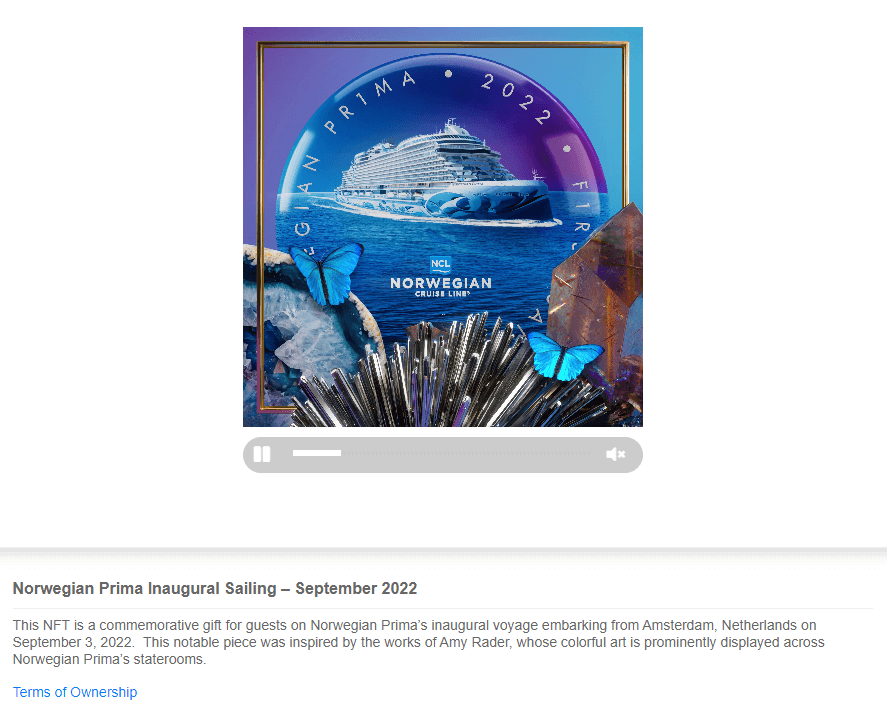
Of all three mentioned, loyalty programs stand out the most. By opting for the use of NFTs this way, travel and cruise operators can transparently and securely award their most loyal customers in a similar fashion to the way achievement badges work. A customer has generated 1K air miles? Send them an NFT and entitle them to the appropriate list of benefits, earned for this tier when they prove ownership at checkout.
The other two avenues from the lists above can be used to support the loyalty program, or any other moving part of operations. For example, because NFT ownership is easily provable, soft identity verification during checkout, like loyalty program benefits can happen at just of a click of a button. And the same applies to security, where immutability and a robust paper-trail can benefit a more transparent and safe process for everyone involved.
Dabbing into sport events with ticket NFTs
Arts and travel events are from being the only type, where NFTs can play an important role in. Quite the contrary—sports can be just as valid as a prospect for them to flourish. Looking at this vertical, in particular, it is quite easy to discover that tickets for sporting events can be quite an interesting avenue for such implementation.
The key benefits of this are two—on one hand, they’d give easier access to games and matches, while on the other, they reduce fraud. The former gives fans the ability to purchase tickets in a more convenient way by effectively skipping the long and tedious brick-and-mortar lines that are usually part of the process.
Meanwhile, the latter brings an extra layer of security via both the immutability and the robust paper-trail factors. But this is far from being ticket-specific, as it also translated successfully to the fraud-free purchase of merchandise and memorabilia just as well. How’s that for a double whammy? Oh right, let’s also not forget about the other double whammy of retaining full control over the royalty and distribution process that will be mentioned excessively in this article.
What are gaming NFTs or how to drive engagement with play-to-earn and in-game assets?
Much like the music and events industry, the gaming one isn’t that far behind on being stacked against creators. That is true for both AAA and indie publishers but is so especially for the latter. But considering AAA publishers are quite rigid, in terms of distribution processes, you will see this section focusing more on smaller indie teams and their releases instead.
An in-game asset NFT presents an incredible opportunity for game developers to promote further engagement in their communities through the ownership factor. Ever wanted to keep a digital record of you earning an epic item from a tough MMORPG boss beyond the game? Traditionally that wasn’t possible but with an in-game asset NFT it is now a reality.
But ownership and better engagement are far from being the only benefits here. Should you set the in-game asset NFT system correctly, you can effectively create a brand-new way for players to monetize the time and effort they spend in-game. This is called a play-to-earn mechanism and is a great way to further solidify player interest in your game.

And how about taking your game to the next level with a fresh trading mechanic that could bind communities together even further? Thanks to NFTs, this is now possible, and you won’t even need to implement it within your game’s code—all it takes is setting up your in-game asset NFT smart contract, so an appropriate marketplace can take care of the rest.
Some textbook examples of in-game asset NFTs in action are Axie Infinity and Gods Unchained. Here’s what you’ll need to set one up for your project accordingly:
- Cover
- In-game item ID
- In-game item properties (optional)
What are real estate NFTs or how to tokenize real world assets and verify ownership?
This, as well as the category coming after, are still somewhat of a grey area, considering the legal framework for their application is not as well-defined, as it needs to be to allow effective use at scale. Even so, this does not mean we cannot hypothesize on how to apply them, assuming such framework already exists.
Should such a framework be implemented, property owners stand to benefit from a more transparent and streamlined process, which can minimize the countless pages of legal papers and consent to a single transaction signing. And let’s not miss out on mentioning the supporting revenue stream from the ownership of the property resales royalty process that sees to all parties receiving their fair share of profits—from owners and landlords to agencies and even the purchaser in the end.
Despite the legal challenges mentioned above, there are some projects already setting out to help defined the framework and give us some great examples of how it all works in action. On one hand, a part of them focus on the less picky digital real estate aspect, as is the case with Decentraland, Upland, SuperWorld, and PolkaCity, for example.

Meanwhile on the other, there are those that actually pave the way for the legal framework like fractional real estate ownership project Fraction, in addition to Propy, which takes a more traditional way to do just that. Regardless of the chosen modus operandi, in order to tokenize a real-world asset, like land, or an estate property, while effectively verifying its ownership you would need:
- Property cover (optional)
- Technical property information
- Ownership legal information
What are decentralized identity NFTs, DIDs, SSIs, and VCs?
Decentralized identity still remains one of the hotly debated topics in Web3 and naturally, there are plenty of takes on the issue because of it. Identity NFTs, Decentralized IDentities (DIDs), Self-Sovereign Identities (SSIs), and Verified Credentials (VCs) are all part of the same approach, albeit being more or less synonymous for each other.
Much like the one before it, this category is also still much of a grey area, due to the lack of specific legal framework that would make it 100% valid. Even so, the decentralized identity space is not foreign to projects attempting to tackle it, with Civic Pass being one of the more successful examples. But our focus is on NFTs and Civic does not use this approach for identity verification, so let’s continue digging.
One of the projects driving NFT adoption for this particular use case is CollectID, which has made steady waves across the entire landscape by signing up large players like Kappa, as well as various sports teams as is the case with FC Köln, Deportivo de La Coruña, and Bayer Leverkusen, among many.
Some of the key benefits of using such approach to solving identity management challenges are giving ownership of user data in the hands of the user, as well as streamlining the verification process at various stages. And while the latter should already be apparent by now, the former represents a cool new way of tackling privacy issues, whether they arise from marketing, sales, or any department whatsoever.
Here’s what you’d need to have to spin up your own take on the subject:
- Cover (optional)
- User ID
- Verification information (protected)
Transcending human identity: Name services for domains and platforms
There is another avenue for decentralized identities apart from that of humans already mentioned—naming services. And while this does sound quite vague for non-tech savvy readers, this can all be boiled down simply to domains and platform nameplates.
The former is a cool new take on the classic Web2 Domain Name Service (DNS), which grants the owner of a particular NFT ownership over the name of the website domain they have purchased by means of a digital asset that can be stored in your wallet. A great example of this in action is the Ethereum Name Service (ENS), which mimics the typical domain subscription via time framed NFTs.
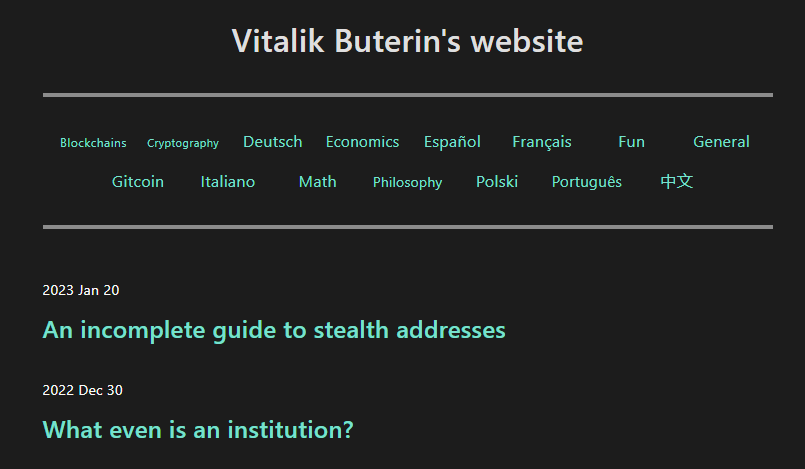
But while, ENS works directly in your browser (via an IPFS connection), other similar services are platform-specific instead, as is the case of Campfire Usernames, which only work as searchable parameters on Campfire Exchange. And unlike ENS’s “.eth” domains, “.fire” ones effectively serve as creator profile tags above anything else.
Bringing it all together
In conclusion, Non-Fungible Tokens (NFTs) have come a long way from being just a novel concept in the digital world. Today, they are being used to represent ownership, authenticity, and scarcity in a vast array of applications beyond just JPEGs. From digital art and collectibles to gaming, music, and real estate, NFTs are proving to be a game-changer in the way we think about and value digital assets.
While the NFT market is still in its infancy, the potential for growth and innovation is immense. As more people begin to understand the true value of NFTs, we can expect to see even more use cases emerge. Whether it’s a new form of digital currency or a way to tokenize and trade assets, the possibilities are endless.
In the end, NFTs are more than just JPEGs—they are a revolutionary technology that has the potential to change the way we interact with digital assets forever. Whether you’re an artist, gamer, or collector, there’s no doubt that NFTs will play a big role in shaping the future of the digital world.
Start BUIDLing and continue learning
So… What’s next? It’s time to BUIDL your first NFT, of course!
But even if this sounds quite difficult already, rest easy, for you don’t have to tackle this challenge alone. Instead, join us for yet another round of empiric learning with one of these relevant tutorials:
Rookie: Get to know the process—learn how to plan your project, deploy a smart contract, mint an NFT, and market any collection post-release:
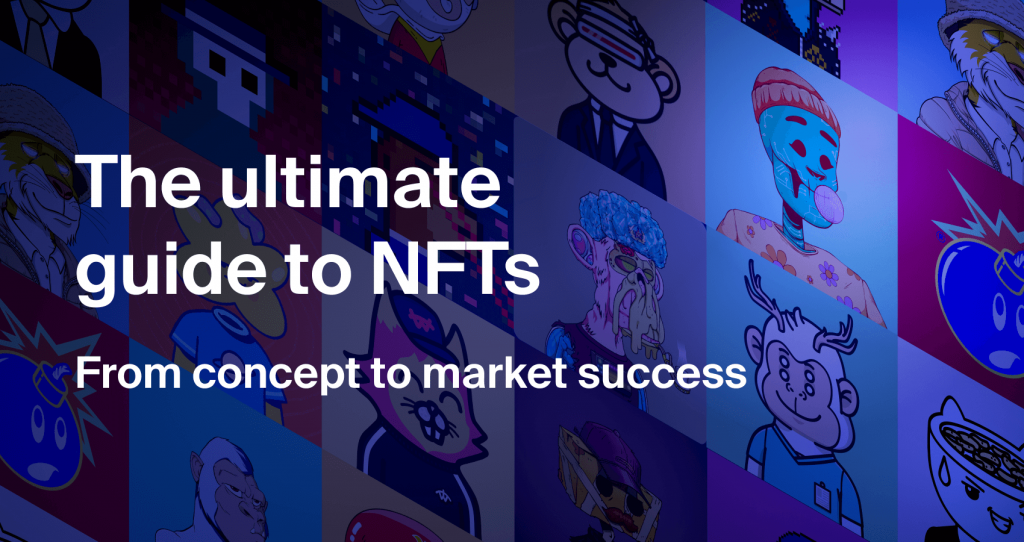
Adept: Want to start minting NFTs, but you’re not an artist? Skip the paintbrush and discover how to code your way to abstract minting art:
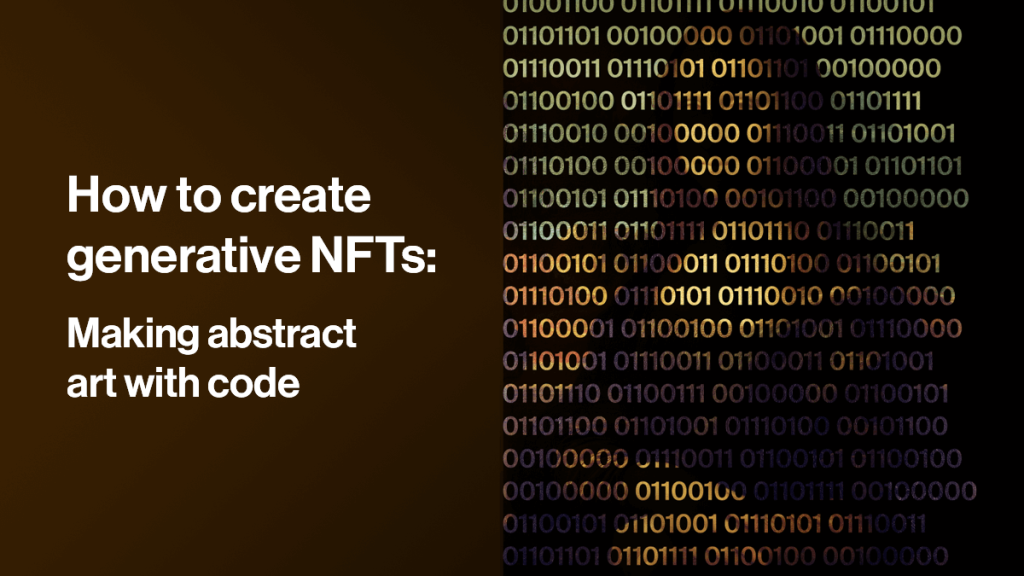
Power-boost your project on Chainstack
- Discover how you can save thousands in infra costs every month with our unbeatable pricing on the most complete Web3 development platform.
- Input your workload and see how affordable Chainstack is compared to other RPC providers.
- Connect to Ethereum, Solana, BNB Smart Chain, Polygon, Arbitrum, Base, Optimism, Avalanche, TON, Ronin, zkSync Era, Starknet, Scroll, Aptos, Fantom, Cronos, Gnosis Chain, Klaytn, Moonbeam, Celo, Aurora, Oasis Sapphire, Polygon zkEVM, Bitcoin and Harmony mainnet or testnets through an interface designed to help you get the job done.
- To learn more about Chainstack, visit our Developer Portal or join our Discord server and Telegram group.
- Are you in need of testnet tokens? Request some from our faucets. Multi-chain faucet, Sepolia faucet, Holesky faucet, BNB faucet, zkSync faucet, Scroll faucet.
Have you already explored what you can achieve with Chainstack? Get started for free today.
 Ethereum
Ethereum Solana
Solana TON
TON Base
Base BNB Smart Chain
BNB Smart Chain Sui
Sui Unichain
Unichain Aptos
Aptos TRON
TRON Ronin
Ronin zkSync Era
zkSync Era Sonic
Sonic Polygon
Polygon Gnosis Chain
Gnosis Chain Scroll
Scroll Avalanche Subnets
Avalanche Subnets Polygon CDK
Polygon CDK Starknet Appchains
Starknet Appchains zkSync Hyperchains
zkSync Hyperchains
















